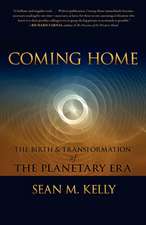Scientific Research In World War II: What scientists did in the war
Editat de Ad Maas, Hans Hooijmaijersen Limba Engleză Paperback – 28 feb 2016
No scientist remained unaffected by the outbreak of WWII. As the book shows, there were basically two opposite ways in which the war encroached on the life of a scientific researcher. In some cases, the outbreak of the war led to engagement in research in support of a war-waging country; in the other extreme, it resulted in their marginalisation. The book, starting with the most marginalised scientist and ending with those fully engaged in the war-effort, covers the whole spectrum of enormously varying scientific fates. Distinctive features of the volume include:
- a focus on the experiences of ‘ordinary’ scientists, rather than on figureheads like Oppenheimer or Otto Hahn
- contributions from a range of renowned academics including Mark Walker, an authority in the field of science in World War II
- a detailed study of the Netherlands during the German Occupation
| Toate formatele și edițiile | Preț | Express |
|---|---|---|
| Paperback (1) | 436.14 lei 6-8 săpt. | |
| Taylor & Francis – 28 feb 2016 | 436.14 lei 6-8 săpt. | |
| Hardback (1) | 823.08 lei 6-8 săpt. | |
| Taylor & Francis – 22 dec 2008 | 823.08 lei 6-8 săpt. |
Preț: 436.14 lei
Nou
Puncte Express: 654
Preț estimativ în valută:
83.45€ • 87.13$ • 69.07£
83.45€ • 87.13$ • 69.07£
Carte tipărită la comandă
Livrare economică 04-18 aprilie
Preluare comenzi: 021 569.72.76
Specificații
ISBN-13: 9781138995956
ISBN-10: 1138995959
Pagini: 268
Ilustrații: 66
Dimensiuni: 156 x 234 x 14 mm
Greutate: 0.45 kg
Ediția:1
Editura: Taylor & Francis
Colecția Routledge
Locul publicării:Oxford, United Kingdom
ISBN-10: 1138995959
Pagini: 268
Ilustrații: 66
Dimensiuni: 156 x 234 x 14 mm
Greutate: 0.45 kg
Ediția:1
Editura: Taylor & Francis
Colecția Routledge
Locul publicării:Oxford, United Kingdom
Cuprins
Introduction: Ordinary Scientists in Extraordinary Circumstances Chapter 1. The Mobilisation of Science and Science-Based Technology during the Second World War: A Comparative History Chapter 2. To Work or Not to Work in War Research?: The Case of the Italian Physicist G.P.S. Occhialini during WWII Chapter 3. Scientific Research in the Second World War: The Case for Bacinol, Dutch Penicillin Chapter 4. Preventing Theft: The Kamerlingh Onnes Laboratory in Wartime Chapter 5. Electron Microscopy in Second World War Delft Chapter 6. "Splendid Isolation"?: Aviation Medicine in World War II Chapter 7. National Socialism, Human Genetics and Eugenics in the Netherlands 1940-1945 Chapter 8. The Birth of a Modern Instrument and Its Development during World War II: Electron Microscopy in Germany from the 1930s to 1945 Chapter 9. Aerodynamic Research at the Nationaal Luchtvaartlaboratorium (NLL) in Amsterdam under German Occupation during World War II Chapter 10. Masa Takeuchi and His Involvement in the Japanese Nuclear Weapons Research Programme Chapter 11. The Cyclotron and the War: Construction of the 60-inch Cyclotron in Japan Chapter 12. Forging a New Discipline: Reflections on the Wartime Infrastructure for Research and Development in Feedback Control in the US, UK, Germany and USSR Chapter 13. British cryptanalysis: the breaking of 'Fish' traffic
Descriere
Scientific Research in World War II seeks to explore how scientists managed to cope with the particular circumstances created by the war. The book focuses on both war-waging countries such as the United Kingdom, Japan, Germany, and the United States, and those under occupation, such as the Netherlands and France.

![When China Rules The World: The Rise of the Middle Kingdom and the End of the Western World [Greatly updated and expanded]](https://i4.books-express.ro/bt/9780140276046/when-china-rules-the-world.jpg)








